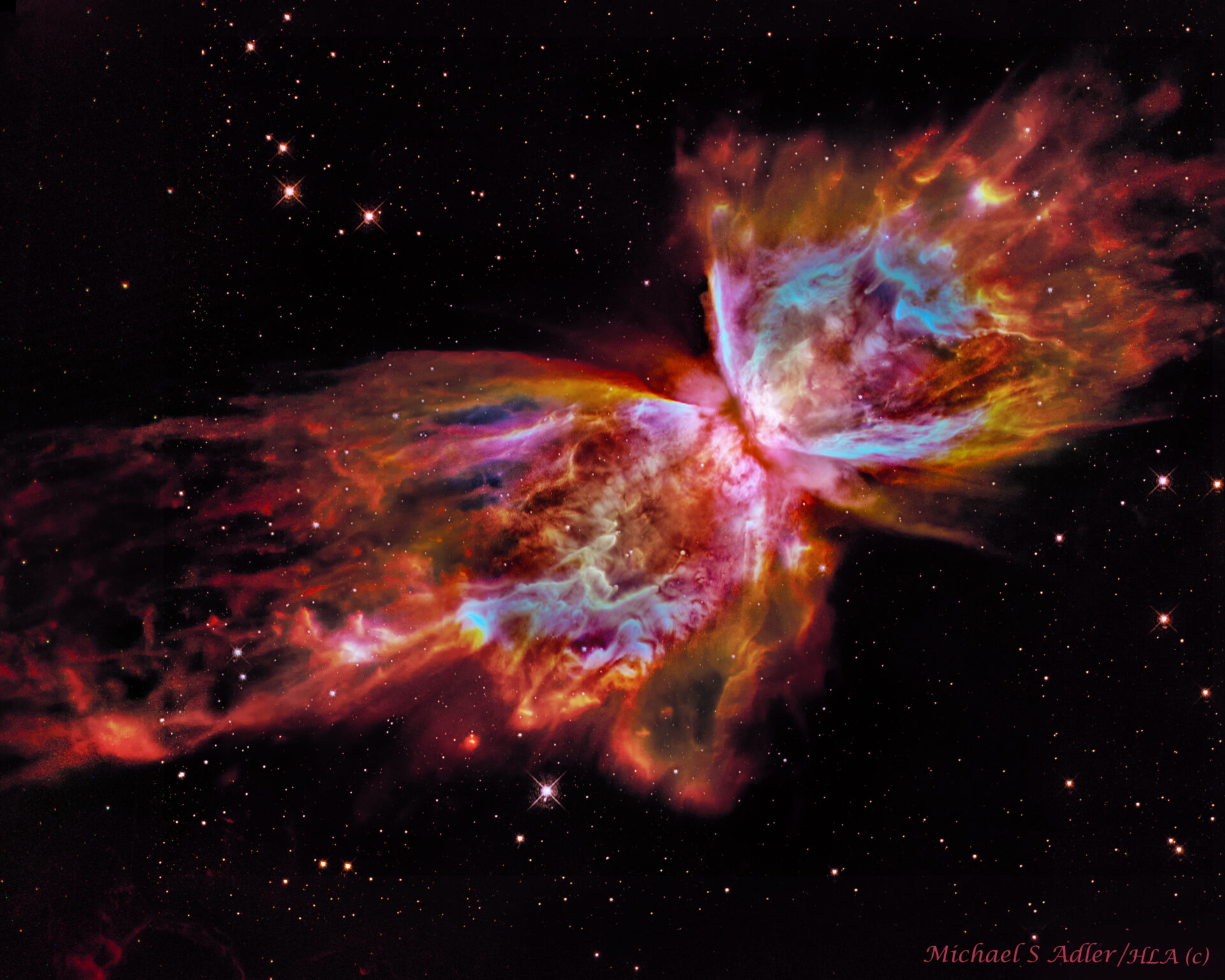Butterfly Nebula, NGC 6302, Hubble Version
$65.00 Original price was: $65.00.$52.50Current price is: $52.50.
The Butterfly Nebula, NGC 6302 NGC 6302 is a bipolar planetary nebula in the constellation Scorpius, over 4000 light years away. It is quite small in the sky at 3 arc minutes in size, about a tenth of the size of the full moon.The structure in the nebula is among the most complex ever observed in planetary nebulae, the leftover remnant of a Sun lake star after its nuclear reactions have stopped. Because of its shape it is called the Butterfly or less glamorously, the Bug nebula. Though its wingspan covers over 3 light years and its estimated surface temperature exceeds 200,000 degrees, C, the dying central star of NGC 6302 has become exceptionally hot, shining brightly in visible and ultraviolet light but hidden from direct view by a dense torus of dust. The star first evolved into a huge red-giant star, with a diameter of about 1,000 times that of our Sun. It then lost its extended outer layers. Some of this gas was cast off from its equator at a relatively slow speed, perhaps as low as 20,000 miles an hour, creating the inner circular area. Other gas was ejected perpendicular to the ring at higher speeds, producing the elongated “wings” of the butterfly-shaped structure. Later, as the central star heated up, a much faster stellar wind, a stream of charged particles traveling at more than 2 million miles an hour, plowed through the existing wing-shaped structure, further modifying its shape. This bipolar structure shows features such as ionization walls, knots and sharp edges to the lobes.
The raw data in this image were taken by the Hubble Wide Field Camera, WFC3. It is equipped with filters that capture light emitted by Nitrogen, Hydrogen, two Oxygen emissions, Sulfur,and Helium. The emission was created by ultraviolet light from the remnant star that excited the leftover gas. This image was done by Michael Adler by processing the raw data in a different manner to that done originally by NASA. https://www.nasa.gov/mission_pages/hubble/multimedia/ero/ero_ngc6302.html
The nebula’s outer edges shown in red are largely due to light emitted by Nitrogen, which marks the coolest gas visible in the picture. The white areas are regions where fast-moving gas overtakes and collides with slow-moving gas that left the star at an earlier time, producing shock waves in the gas. The green in the image is from Hydrogen emission, the blue is from doubly ionized Oxygen and the deep violet is also from Oxygen emission in the ultraviolet. The yellow is from Sulfur emission and the orange is a mix from the red Nitrogen and green Hydrogen emission. The Helium cyan emission is weaker and can be seen in the small blue areas seen in both “wings”.
Optics: Hubble Wide Field Camera 3
Mount: Hubble Telescope
Camera: Hubble Wide Field Camera 3
Filters: Sii(673nm), N(658nm), Ha(656nm), Oiii(502nm), He(469nm), O(373nm)
Dates/Times: July 2009
Location:
Exposure
Acquisition:Downloaded raw FITS images for each filter from the Hubble Legacy Archive
Processing: Stretching done for each in MaximDl using Digital Development filter, created RGB image in PS2022 with N in Red, Ha in Green, Oiii in Blue and then added spot color channels for Sii in Yellow, H in Cyan, and O(373) in Magenta. Color balance, brightening, sharpening, noise reduction were done in PS2022. Stars were removed from Sii using StarXTerminator and the added into the image.


